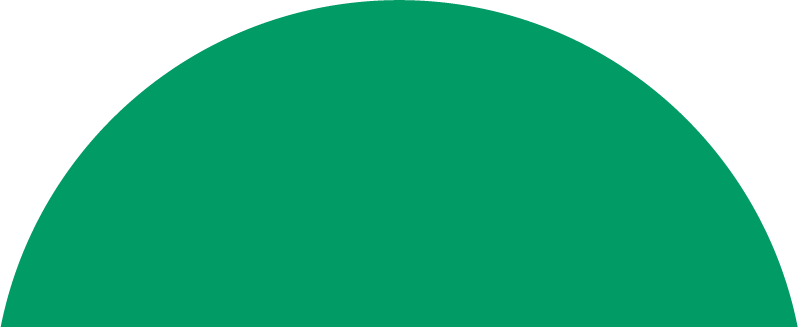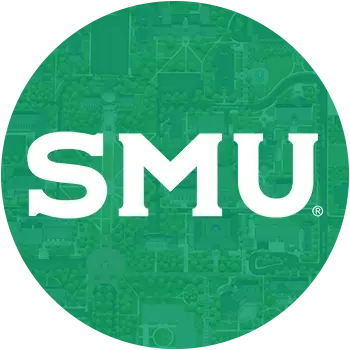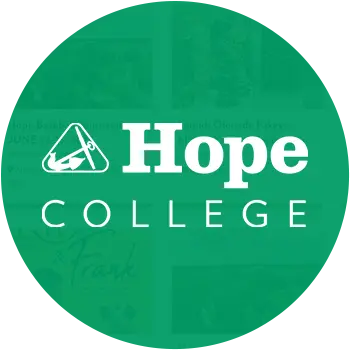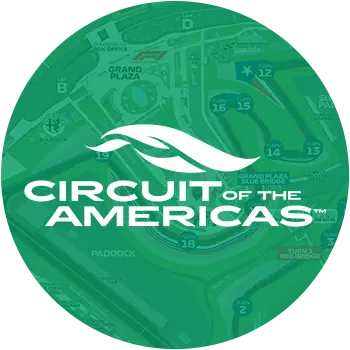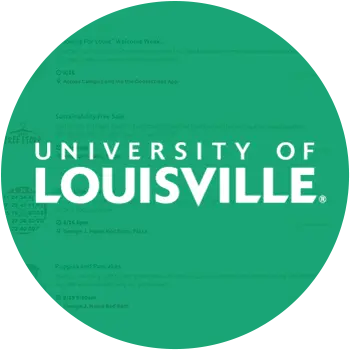Episode 78: Saving the World Through Agriculture & Making Your College Stand Out with Tim Senft

Read the transcription
Shiro Hatori
Hello, everyone. Welcome to the higher ed dimension podcast hosted by concept 3d. If you like our content, please follow and subscribe to us on Spotify, Apple, Google, wherever you’re listening to us. And if you’re on Apple, please drop us a comment. I love to hear your thoughts. My name is Shiro Hatori, and I am your host today. And today I’m really excited to talk about saving the world through agriculture and making your college stand out for the conversation. I’m very excited to have Tim sent join us today. Tim is a digital communications director at Cornell University, College of Agriculture and Life Sciences. I actually got to attend his session at higher ed web earlier this year in Buffalo, New York, on force for the trees growing your evergreen content strategy. So that’s how I connected with him. I was like, hey, I really liked that topic. So I reached out. Welcome to the show, Tim. Thanks,
Tim Senft
Shiro. Thanks for having me. Excited to be here,
Shiro Hatori
as well, and I asked all my guests this, tell me what you love about higher ed.
Tim Senft
I think ultimately, what I like about higher ed is that it has good outcomes. I like the idea that I’m working for an organization or even a field in which I’m helping people learn ultimately, like even if I’m not teaching, even if I’m not doing that it’s great to be a part of something that’s really about just making the world a better place through giving people knowledge, mostly. Absolutely.
Shiro Hatori
I would counter that and say you definitely are teaching people. You’re that teller, you’re the district distributor of information. So that’s true. That’s true. Yeah. Maybe not in the classroom, right, in one way or another. Great. Well, can you tell us a little bit more about your role with the college and Cornell as a whole as well?
Tim Senft
Yeah, sure. I’m a I’m basically the digital communications director for Kaos. And that includes pretty much me overseeing their large website system, which is like a core site, but then about 60, other department websites and a couple of sites that are part of different campuses and all that stuff. So it’s a pretty large Drupal system. But it’s a shared website. Like it’s one single website, it’s not really okay. Yeah, it’s like, basically, so we can share all of our content across the entire ecosystem instead of you know, basically compartmentalizing anything so and then my team works really closely with the university relations, which is the central Cornell group as well as Cornell it, which is the more technology technology side of Cornell, just to basically implement things. And we work really closely with them. As far as stories go editorially, my team, the bigger team does a lot of that work, but because I’m mostly focused on the web, so but I’m the one who facilitates all that stuff getting to the web, basically. So
Shiro Hatori
great. And I know we’ll probably be referencing cows a lot today. But cows is College of Agriculture and Life Sciences, correct?
Tim Senft
Yes. And cows is like our big brand that we did a brand exercise right before I started working there about five years ago. And that’s what came out of that was the cows cls. Sometimes people think you’re saying cows, which is fine, because because we have a lot of cats. So it’s, it’s okay to say cows do but yeah.
Shiro Hatori
I, when we in our intro call, I actually didn’t think you said cow. So, but a quick Google search and cows ca L. S did come up. So you got your SEO on point.
Tim Senft
That’s what I’ve been. I’ve been working on that. So
Shiro Hatori
that’s fantastic. Great. Well, you know, I made a bold statement earlier on saying saving the world. Right. Can you tell us a little bit more about what Kaos is doing and why I made that bold statement? Sure. Yeah,
Tim Senft
we have most of our researchers and faculty and we do a lot of extension, which is the outreach into communities etc. Almost all that work is an effort to improve food science, improve agriculture, improve even applied economics, all kinds of things across the world to help better basically facilitate food to people ultimately, and more food and better food and all that stuff. So ultimately, we’re trying to and I should not let out biology like basically basic sciences and stuff like that we do a lot of in that space, which leads to stuff even more stuff, you know, kind of thing. So yeah, we that’s basically what all of our researchers are trying to do, basically prove the world. That’s why our brand is life changing, which, you know, life changing because of sciences.
Shiro Hatori
And I learned in our prior conversation a fun fact about cow apples. And now I should maybe say cow fruits, because there’s a lot behind this right? Can you tell us more about the cow apples? Yeah, so we we are responsible
Tim Senft
for 283 When last totaled fruit varieties. So we’ve created 283 fruit varieties, and 59 wine grape varieties that are used all around the world. And so like, that’s kind of what I’m getting at is like we’re doing plant science, all kinds of things that really sort of change agriculture and the life sciences for everybody as much as possible. So it’s a lot of fruits Shiro. Like, I don’t even know if I can think of 283 fruits, you know.
Shiro Hatori
Yeah. And I think you mentioned like a majority of the apples consumed in the US are from one of those 200. Yeah. So fruits that you’ve that come from the cows, right? They are
Tim Senft
our researchers. Yeah, somewhere along the line, somebody combined something with something. And there’s a lot of plant pathology and plant breeding, etc. And
Shiro Hatori
part of your role is communicating some of that amazing research and science behind cows, right? What is the relationship like working with the actual research team or the research that comes out? And then your website and distribution channels? What does that all look like? Because you can’t you have to get the word out to you can’t just do the research itself. So I’m curious how you go about that. And we’re really lucky to
Tim Senft
Cornell callus is really lucky, because we have researchers who tend to be pretty excited about getting their work out into the world. And they tend to be very willing to work with us, which is great. So usually, what happens is somebody somewhere at the college, which is pretty big, we have like 4000 undergraduate students, and 350 or so faculty members, and then we have a whole extension group of people who are reaching out to the communities doing education there. But they, somebody comes to us and says, I have this really cool thing, or I heard this cool thing from somebody, we have a person on our team, her name is brand and she actively seeks out like, what the details are, if it’s something we really want to focus our efforts on. She does a lot of that work between our team and the Central University Relations team. If they want it, they can do a lot of that work. But we’re always involved in that whole process. And then when if they produce something, whether they produce something or whether we produce something, we loop it through our website. So everything comes back through me at some point in some way, shape, or form. And then my team works together to try and figure out what we want to do with certain stories, we do a couple things where we have some bigger stuff that we work on every year. And actually, like sort of clump that all together into actual larger campaigns, which we drive out to very specific sources. So there’s a social aspect, almost always for those there’s, we actually just started some paid advertising piece to see if we could drive some more interest into those stories. And these are the big ones like, you know, climate change and the stuff where we’re really trying to impact how the world works kind of stuff. The next to the last one was agri food systems, where you’re talking about like, what the whole system of getting agricultural foods to the people looks like and and how we can streamline that and make it more efficient and all that stuff. So So yeah, the website is the primary tool to drive people to that information, which has been pretty much handpicked by us and our my team. That’s
Shiro Hatori
fantastic. And in, you know, you said you started some paid advertising, what is like the ultimate goal of, of driving more viewership, you know, I mean, you want to get your research out there for people but is it also to elevate the brand cows record now as a whole? Is there a strategic initiative behind all this as well or a goal you’re trying to reach? Yeah,
Tim Senft
it is. I mean, it is primarily about improving. It’s primarily about delivering the information and then secondarily about making sure people understand that Cornell cows is based the leader in that space, and that we’re, we want people to join us. That’s a big piece of how Cornell cows works is we want interaction we want collaboration Our college is very collaborative across all of our disciplines. So to ask other people around the world to join us is kind of a primary goal. The paid advertisement piece is a little bit more of a, let’s see if we can get in front of the right people. And a lot of those people are other researchers and people who we want to collaborate with. So we did, we’ve done a couple of little tiny pieces. So it’s not a lot of money, but it was enough to get some extra distance out of the last thing that we did, and it helped inform what we’re gonna do next, we have another big thing coming up, which I’m not gonna, I’m not gonna scoop my team on. But yeah, so we have a next one that we kind of took all the learnings from what we just did, and trying to reapply them.
Shiro Hatori
That’s awesome. And I’m sure it’s taken a while to create this high performing website or distribution channel, like, what what were some steps, key steps you took to make sure like you said, the whole website is on Drupal. So it’s easy to share links across? What are some other things that you’ve done to make it an easier process?
Tim Senft
Well, that’s I mean, that was the key component, because our, our say, used to be many, many, many sites in lots of domains and stuff. So our authority was terrible, you know, the core site had a pretty good authority, but the rest of our departments had nothing. Since we relaunched the site, which was in 2019, we’ve pretty much like, increased our authority by I don’t remember. Now, it’s like probably 20 points, and our traffic is up 300%, or something crazy like that. Because what we do is we have a couple of core central applications, like people and articles and events and stuff like that, but they can be shared pretty much universally across the system. So even if somebody’s coming in through animal science, they might see a related event for plant science, because those two teams sometimes work together. So you know, you’re going to get that hit, and that hit and it’s going to elevate the event itself or something like that. So that our main my main goal for building the site, the way it’s built, is to try and distribute authority across the whole site and raise it up all the way. And we and we have a couple of groups that I mentioned them, one of them in my talk, which was New York State, integrative pest management, which is they get some of our biggest hits, because they talk about, you know, ticks and bedbugs and things no one wants to have in their house. So they have a lot of really high performing pages that we want to try to loop people in and get them you know, attached.
Shiro Hatori
That’s fantastic. And yes, speaking about your session I was able to attend in person this session was called forest for the trees growing your evergreen content strategies. Can you share some like key takeaways from your your session? I know we don’t have enough time to cover them all. But
Tim Senft
I think my my biggest learning for myself while I was doing doing the research for it was what what I determined what I previously thought evergreen content was and what I walked away with understanding what evergreen content was. And while they overlap a little bit there, there really is a big difference like has been my hit my sort of like experience that when people talk about evergreen content in higher ed especially they’re talking about like the admissions page and the homepage and these top level pages that talk about the institution and they want to make sure that somehow people understand the institution and that’s elevated and stuff like that. And while that’s true, your actual evergreen content is the content that people just keep coming back to over and over again for whatever reason SEO is high or or for it just has that it has that niche audience that just can’t get enough of it you know, and so for us weirdly enough, there’s these two very specific places where we get this massive amount of traffic one of them is this I’m not even going to say it because I know I’m gonna say it wrong even though even though the faculty member who is responsible for it has told me how to say it several it’s this it’s a basically a micro organism section of our website, which is really detailed on this specific micro organism and it must be used in somebody’s somebody’s science class or something somewhere because it gets these math like teenagers hit it all year long. It’s this crazy thing and and that’s one and then the pests like you know tick the spotted lantern fly in the you know, that kind of stuff. We’re seeing so much hit so much traffic there. That’s really where while I was doing this research, I said, Oh, I should start focusing some of my real attention on like, how do we elevate other content on those specific pages, because they’re getting all this traffic. And we’re like, seeing these other things that are related, not nearly get anything at all. So that’s, that’s, that’s the main takeaway for me. But then also, we, we use some of that to, to implement changes on the homepage, which we, we’ve recently done a whole GA for redesign of our are sort of underlying structure. So we could track a lot of that, which was really essential for like, the last few months, like trying to really understand how our homepage works, and who’s coming there so that we can then deliver that back to the people who are constantly saying, but what about me or whatever? You know?
Shiro Hatori
Right? Comment on the What about me? Topic is, I think you mentioned like in your, in your session about, like reducing the noise and the cooks in the kitchen? Yeah. How do you actually like, do you? How do you actually like, refute that or, or talk against it, you come back with data and say, Hey, like, you know, people actually, like, they’re looking at these texts, or actually looking at your, you know, your piece of article that you wrote? Like, how do you go about navigating those conversations,
Tim Senft
that’s exactly what we’re doing. I have, over the last like, five years, especially built some really good relationships across the entire college with faculty, especially in the the people who do the work in those organizations. So when I come to them, now, they know I’m not sort of coming at them hot and angry, you know, we got asked by a lot of our internal work groups to the specifically the, like, administrative groups, to represent them on the homepage, we found out, we put very specific links up there to see how much engagement they would get, and, you know, not totally surprising to me, but to them, they really didn’t get any traction at all. And so now we have that data, which, you know, at this point has been running for three months, four months, that, you know, people don’t want that on the homepage, that’s not what they want. So now we can retailer, the homepage, again, to really address the precise groups that we know are coming there and give them more CTAs. So that we can track exactly where they’re going. And that’s going to elevate like the ability for us to update those pages, right that that content, because it’s clear, that’s evergreen content to we know they’re coming to it.
Shiro Hatori
That’s great. It reminds me of an exercise we do at counsel 3d to is we look at all our blog posts on a monthly basis. And, you know, look at any outliers of top performers. And and if they’re not pages, we’ve added extra CTAs, to like, we’ll go in and add extra CTAs and make sure that they’re relevant. And we’re providing like a next step from that page or an opportunity to learn more about the same topic or something. So yeah, that’s great.
Tim Senft
That’s what that’s what that’s like my pie in the sky dream. That’s like, giving, like, you know, everybody at least three choices and seeing which one works, you know, that kind of thing. So I
Shiro Hatori
think another interesting thing you pointed out in your in your session was that like, I think you call it program finding, but you made the degrees programs majors a lot easier to find on the Kaos page. How’s that going for you?
Tim Senft
Really crazy? Well, so we had a before we migrated, we were in Drupal seven. So before we migrated over to Drupal eight, everything was like, spread out all across the system. There was no centralized place. There was like a bulleted list linked list, you know, like, just have like, here’s some stuff. And it didn’t have it wasn’t tagged no taxonomy, no. So anything to really help sort it out. So we built this very specific thing, which we call the program finder, in and it’s, and the whole point to building it was to prove to the people throughout the college that people are coming through the Corps website, to find their programs. And if we give them this tool where they can actually sort through and, and sort of pick them as they go, we’re going to see that they’re not going to the department site as much until they’ve gone through that which is what we’ve proven. And the amount of engagement we get even in the department sites. We have one department where I think they they were notoriously under engaged with at but they are kind of one of our more important departments. And when we finally moved them into the system and built them Up in this particular way, there, they, they asked what we could do because they were getting too many submissions and too much interest and, and their, like their engagement on the website went up, I want to say 500% or something like that, like, they went from getting about 50 to 100 engagements to like 300 engagements. And they like actual people reaching out and saying, hey, I want to know more about this program. And so it’s a very small program. So it was kind of a huge hit to them. But it was also like, yeah, because the website’s finally working for you, as opposed to like, hiding you away in this weird place, you know? So that’s,
Shiro Hatori
that’s fantastic. I mean, that’s all demand that was already there. That’s you’re just capturing it better, because a better system for it. Which I think is one key thing, if I walk away from this conversation today is like having the your systems connected or centralizes. From a web web positioning standpoint, is really key to making sure you’re you’re creating the right capture demand capture engine.
Tim Senft
Yeah, definitely. And one of the big sales for like, one of the big pieces for me is just making sure everyone have a big organization. So just making sure you’re like, making sure everybody understands that we’re doing this together. And it’s not my ego that’s feeding it’s it’s the hope that you get as many people like, the more we work together, the better we’re gonna get out of this. I think
Shiro Hatori
that’s great. If you had to tell someone just like top three tips to create a high performing homepage for higher ed, like, what would what would you tell them?
Tim Senft
Pick what you think is important. Give people a clear CTA to that, and track it. And after a month, you’re going to be able to see if you were right or wrong. And in two, two cases, we were very right. And in one case, we were very wrong. So it was good to it’s good to be able to look at that data and say, oh, yeah, that didn’t work the way that it was gonna work. So. So yeah, it’s really important to track stuff if you have not built in a good analytics strategy. Like start there, start with start with trying to understand why people are clicking, or what people are clicking on, and why they might be clicking on it.
Shiro Hatori
That’s fantastic. Yeah, I think. I mean, websites are a science, right? You have to have an hypothesis and measure results and iterate. So I like that you pointed that out? Um, yeah, I think we’re just about at time, but I’m wondering where our listeners can connect with you to learn everything you’re up to or what the cows are up to? Well, I
Tim Senft
am on LinkedIn, so people can find me there. That’s where I usually do my, my my professional stuff, and I am on Twitter x x Twitter, I guess I should say, and I’m, I’m Bozo Zam. That’s my, my Twitter handle. I’m not there as much anymore, but we’ll see what happens over the next couple months. So otherwise, I am going to conferences and I am around so anybody could just reach out if they want to do. Do
Shiro Hatori
you have one scheduled for next year? Are you going to be at hired but in or I
Tim Senft
don’t have one scheduled yet. But I am interested in doing a couple of conferences that I have not been to in a while. So I’m going to see if I can get into those before I but I don’t want to give it away because if I don’t, then everyone will be sad.
Shiro Hatori
Okay, stay tuned, I guess follow Tim on on LinkedIn. Well, no, that was great. Thanks so much for joining today. It was an awesome calm. Yeah. Thanks. Yeah. This is great. It’s very unique. Thank you. Great. Well, thanks for thanks to our listeners also for tuning in and catch us on the next one. All right.
Transcribed by https://otter.ai
Concept3D’s photospheres really allow us to show rather than tell what separates our studios from others.
The biggest challenge for [Claremont Graduate University] was lack of a centralized map system entirely. Roughly 30 different maps existed on our website pre-[Concept3D], created by various departments to meet their own needs.
The new virtual campus map is particularly helpful to showcase our campus to prospective students and families who are not quite ready or able to physically visit campus. International students are a great example of a group who typically do not visit our campus before enrolling, but really value getting a birds-eye view of the place they’re considering calling home.
We saw the potential of Concept3D’s platform right away, and it was amazing to see our space come to life in a fully interactive 3D map. We know the platform will improve the overall guest and attendee experience, and we’re excited for all the ways that we can use it for both internal and external needs moving forward.
Vantage is committed to exceptional customer service, and the technology developed by Concept3D helps us work closely with potential clients, give them an incredible preview of the data center and offer a compelling way for them to explore the critical details of our facilities.
The CMS makes integrating our data feeds a simple, easy process. We can update our content feed once and it updates within the CMS and our map simultaneously.
We want Rice to be a welcoming destination for art, music, lectures, food, athletic events, lectures – a great place to visit just to enjoy the beauty of our campus. [The Concept3D] mapping system will help people find those amenities and explore those opportunities.
Our residents are getting more savvy with technology and they will certainly appreciate a tool that guides them from location to location on our campus. Concept3D’s wayfinding capability was the immediate draw for us, but the map and interactive media have been valuable for depicting a bird’s eye view in print materials, or when scheduling an onsite visit. Residents, visitors and even staff find a lot of utility and functionality in Concept3d, and we often hear compliments about our beautiful map.
